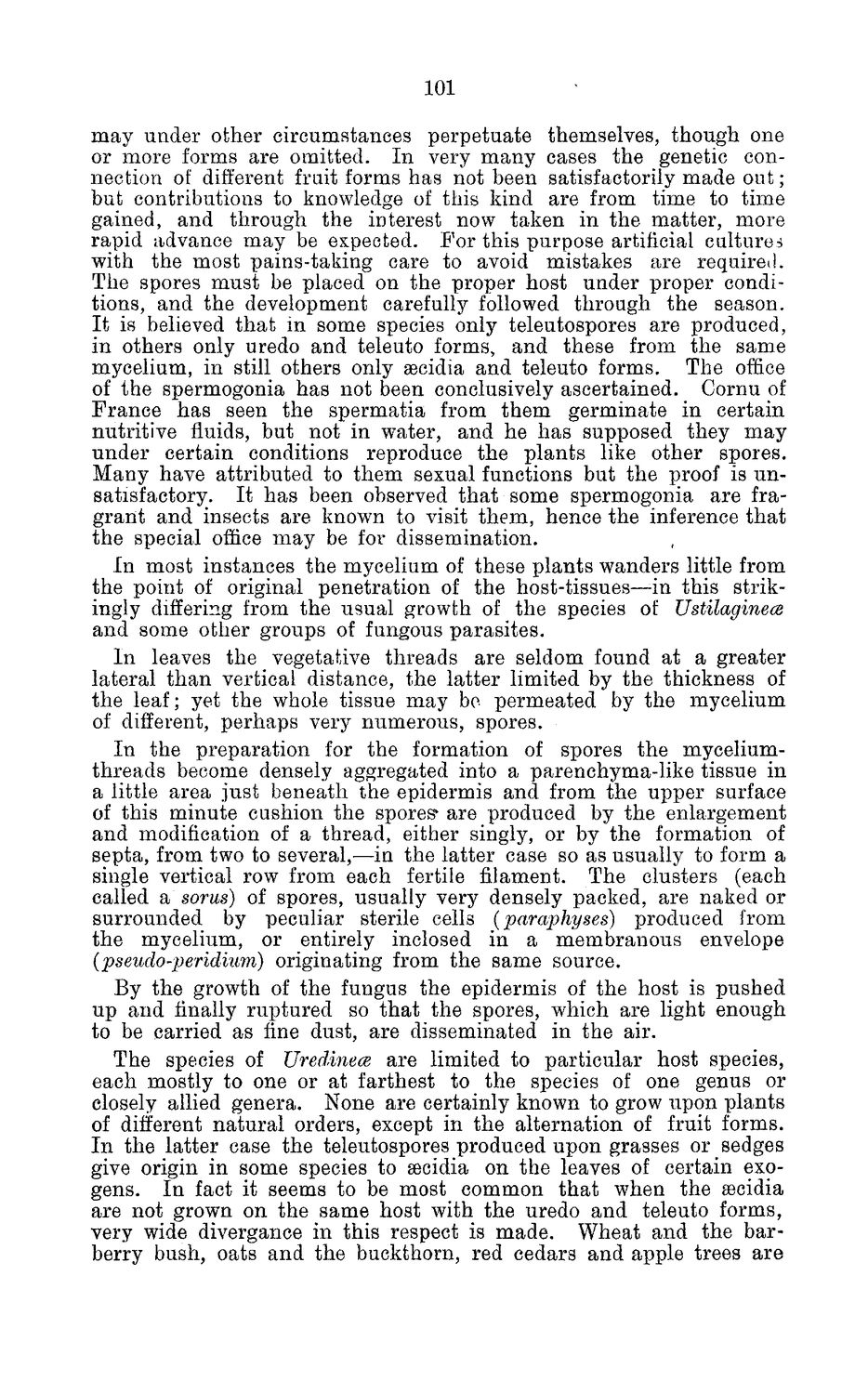| |
| |
Caption: Board of Trustees Minutes - 1884
This is a reduced-resolution page image for fast online browsing.

EXTRACTED TEXT FROM PAGE:
101 may under other circumstances perpetuate themselves, though one or more forms are omitted. In very many cases the genetic connection of different fruit forms has not been satisfactorily made out; but contributions to knowledge of this kind are from time to time gained, and through the interest now taken in the matter, more rapid advance may be expected. For this purpose artificial cultures with the most pains-taking care to avoid mistakes are required. The spores must be placed on the proper host under proper conditions, and the development carefully followed through the season. It is believed that in some species only teleutospores are produced, in others only uredo and teleuto forms, and these from the same mycelium, in still others only gecidia and teleuto forms. The office of the spermogonia has not been conclusively ascertained. Cornu of Prance has seen the spermatia from them germinate in certain nutritive fluids, but not in water, and he has supposed they may under certain conditions reproduce the plants like other spores. Many have attributed to them sexual functions but the proof is unsatisfactory. It has been observed that some spermogonia are fragrant and insects are known to visit them, hence the inference that the special office may be for dissemination. In most instances the mycelium of these plants wanders little from the point of original penetration of the host-tissues—in this strikingly differing from the usual growth of the species of Ustilaginece and some other groups of fungous parasites. In leaves the vegetative threads are seldom found at a greater lateral than vertical distance, the latter limited by the thickness of the leaf; yet the whole tissue may be permeated by the mycelium of different, perhaps very numerous, spores. In the preparation for the formation of spores the myceliumthreads become densely aggregated into a parenchyma-like tissue in a little area just beneath the epidermis and from the upper surface of this minute cushion the spores* are produced by the enlargement and modification of a thread, either singly, or by the formation of septa, from two to several,—in the latter case so as usually to form a single vertical row from each fertile filament. The clusters (each called a sorus) of spores, usually very densely packed, are naked or surrounded by peculiar sterile cells (paraphyses) produced from the mycelium, or entirely inclosed in a membranous envelope (pseudo-peridiiim) originating from the same source. By the growth of the fungus the epidermis of the host is pushed up and finally ruptured so that the spores, which are light enough to be carried as fine dust, are disseminated in the air. The species of Uredinece are limited to particular host species, each mostly to one or at farthest to the species of one genus or closely allied genera. None are certainly known to grow upon plants of different natural orders, except in the alternation of fruit forms. In the latter case the teleutospores produced upon grasses or sedges give origin in some species to secidia on the leaves of certain exogens. In fact it seems to be most common that when the secidia are not grown on the same host with the uredo and teleuto forms, very wide divergance in this respect is made. Wheat and the barberry bush, oats and the buckthorn, red cedars and apple trees are
| |